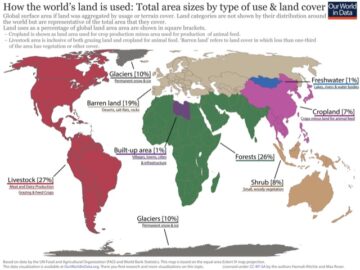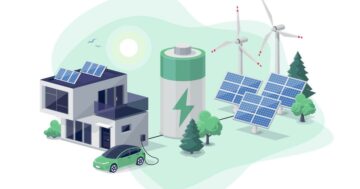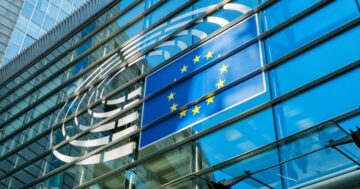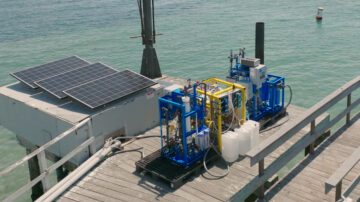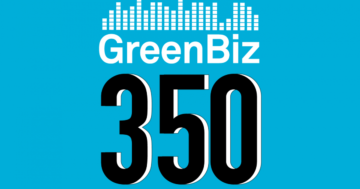
Last week, I wrote about how the Inflation Reduction Act (IRA) falls short of the systemic climate intervention we need to decarbonize our economy. But the IRA is what we’ve got — and it comes with the potential for consequential financial and greenhouse gas reduction wins for companies that take advantage of its incentives.
In the bill’s first year, many companies have been in watch-and-wait mode. Whether they’re not early adopters or buried under other priorities, under-resourced in humans or in expertise decoding complex government-ese, companies that haven’t unlocked the opportunities for their business in the IRA are feeling some FOMO.
I checked in with Victoria Mills, managing director of corporate partnerships at the Environmental Defense Fund. Mills has spent the post-IRA era encouraging and facilitating business engagement with the legislation. I called her last week to get her perspective now that we’re a year out. I wanted to ask her: What can corporate sustainability professionals do to kickstart their companies taking advantage of the IRA in its second year? And with a nod to the words of Dr. Jeffrey Sachs, how important is advocacy for broader policy changes?
Mills’ advice boils down to two steps:
1. Visit IRAtracker.org and look at it through the lens of your existing business and greenhouse gas reduction goals, she directs. The tracker, which is linked to the IRA database, lays out details about the types of projects eligible for incentives to help you determine whether the opportunities apply to your needs. Is it still challenging to parse the legal language? Yes, but these tools organize the incentives and make them searchable.
Current options include:
2. Suss out examples of possible ways to make use of the incentives. Go to the Understanding the IRA hub, developed by EDF in partnership with Deloitte, to see if any of those use cases also fit your company’s needs. Look at Invest.gov, which lists businesses making investments supported by the IRA, Bipartisan Infrastructure Law and CHIPS and Science Act. She said: “Find out, what are other companies doing?”
Here’s what else corporate sustainability professionals need to know. (This conversation has been edited for clarity and length.)
Siegler: What advice would you give corporate sustainability professionals whose companies might be in the second wave of IRA adopters?
Mills: Every company approaches it a little differently. Some have internal teams, some have a single champion, some work with consultants. But the common element is an understanding of the opportunity, and a refusal to leave good money on the table. This is where corporate sustainability professionals can be so effective, because this is what they do every day: They are the hub, internally, of the different corporate groups, whether it’s product development, finance, tax, government relations, marketing. They know which stakeholders to bring together around a company’s sustainability priority, and how to tie it to a goal that the company has articulated.
Siegler: Can you offer an example or two of specific incentives that you’ve seen working for the private sector?
Looking at some of the announcements that have been made: GE announced a new facility near Schenectady, NY, where they’re going to be manufacturing wind turbines. That is enabled by the Inflation Reduction Act. Google announced a big investment that was enabled by the renewable energy tax credits. A number of other companies have taken advantage of [incentives on the] renewable energy and clean manufacturing side. We are watching and very hopeful that more companies will start taking advantage of the commercial vehicle tax credit to green their fleet.
Siegler: Is there something that you wish would have happened in the first year that we can work harder to achieve in the second year?
Mills: I think that one of the important things to keep in mind is that it’s still early days in the implementation of the IRA. Get informed, get engaged, and help pass other policies that are needed for the system transformation.
Siegler: Do you have a perspective on whether the bill will deliver on its decarbonization potential?
Mills: I would say, we are hopeful — hope being a verb with its sleeves rolled up. Now is not the time to sit back and paint our toenails and assume that this legislation is automatically going to drive the reductions. Get involved in defending the IRA, which is under constant political attack. For businesses to have the certainty that that money is going to be there, they need to be communicating with their members of Congress and saying, “We want this. Don’t take it away. We’ve just recalculated, re-forecasted, redone our analysis on how this legislation can help us achieve our goals, and we want it to be there.”
Even if the IRA achieves everything it’s supposed to, that’s still only about a 40 percent reduction, and we need to get to 50 percent reduction in greenhouse gas emissions to meet our NDC [Nationally Determined Contribution to the Paris Agreement of reducing emissions 50 to 52 percent below 2005 levels by 2030]… We need additional policies to close the gap between the IRA and the NDC.
- SEO Powered Content & PR Distribution. Get Amplified Today.
- PlatoData.Network Vertical Generative Ai. Empower Yourself. Access Here.
- PlatoAiStream. Web3 Intelligence. Knowledge Amplified. Access Here.
- PlatoESG. Automotive / EVs, Carbon, CleanTech, Energy, Environment, Solar, Waste Management. Access Here.
- PlatoHealth. Biotech and Clinical Trials Intelligence. Access Here.
- ChartPrime. Elevate your Trading Game with ChartPrime. Access Here.
- BlockOffsets. Modernizing Environmental Offset Ownership. Access Here.
- Source: https://www.greenbiz.com/article/year-2-what-ira-can-do-your-company
- :has
- :is
- :not
- :where
- $UP
- 2005
- 2030
- 40
- 50
- 8
- a
- About
- Achieve
- Achieves
- Act
- Additional
- adopters
- ADvantage
- advice
- advocacy
- Agreement
- also
- an
- analysis
- and
- announced
- Announcements
- any
- Apply
- approaches
- ARE
- around
- article
- assume
- At
- automatically
- away
- back
- BE
- because
- been
- being
- below
- between
- Big
- Bill
- bipartisan
- bring
- broader
- business
- business news
- businesses
- but
- by
- called
- CAN
- Canada
- cases
- certainty
- challenging
- champion
- Changes
- checked
- Chips
- clarity
- Climate
- Close
- comes
- commercial
- Common
- communicating
- Companies
- company
- Company’s
- complex
- Congress
- consequential
- constant
- consultants
- contribution
- Conversation
- Corporate
- credit
- Credits
- Database
- day
- Days
- decarbonization
- Decoding
- Defending
- Defense
- deliver
- deloitte
- Democrats
- details
- Determine
- determined
- developed
- Development
- different
- Director
- do
- don
- down
- dr
- drive
- Early
- early adopters
- economy
- EDF
- edited
- Effective
- element
- eligible
- else
- Emissions
- enabled
- encouraging
- energy
- engaged
- engagement
- environmental
- Era
- Ether (ETH)
- Every
- every day
- everything
- example
- examples
- existing
- expertise
- facilitating
- Facility
- Falls
- finance
- financial
- First
- fit
- FLEET
- FOMO
- For
- Free
- fund
- gap
- GAS
- get
- Give
- Go
- goal
- Goals
- going
- good
- Good Money
- Government
- Green
- greenhouse gas
- Greenhouse gas emissions
- Group’s
- happened
- harder
- Have
- help
- her
- hope
- hopeful
- How
- How To
- HTML
- HTTPS
- Hub
- Humans
- i
- if
- implementation
- important
- in
- Incentives
- include
- inflation
- informed
- Infrastructure
- interested
- internal
- internally
- intervention
- Investments
- involved
- IRA
- IT
- ITS
- jeffrey
- just
- Keep
- Know
- language
- Last
- latest
- Law
- Lays
- learning
- Leave
- Legal
- Legislation
- Length
- Lens
- levels
- linked
- Lists
- little
- Look
- made
- make
- Making
- managing
- Managing Director
- manufacturing
- many
- Marketing
- Meet
- Members
- might
- mind
- Mode
- money
- more
- nationally
- Near
- Need
- needed
- needs
- New
- news
- Newsletter
- node
- now
- number
- NY
- of
- offer
- on
- ONE
- only
- opportunities
- Opportunity
- Options
- or
- Other
- our
- out
- paint
- paris
- Paris Agreement
- Partnership
- partnerships
- pass
- percent
- perspective
- plato
- Plato Data Intelligence
- PlatoData
- policies
- policy
- political
- possible
- potential
- priority
- private
- private sector
- Product
- product development
- professionals
- projects
- RE
- reducing
- reducing emissions
- reduction
- reductions
- refusal
- relations
- Renewable
- renewable energy
- Rolled
- s
- Sachs
- Said
- say
- saying
- Science
- Second
- sector
- see
- seen
- Senate
- she
- Short
- side
- single
- sit
- So
- some
- something
- specific
- spent
- stakeholders
- start
- Steps
- Still
- Supported
- supposed
- Sustainability
- sustainable
- system
- systemic
- T
- table
- Take
- taken
- taking
- tax
- tax credit
- teams
- that
- The
- the hub
- their
- Them
- There.
- These
- they
- things
- Think
- this
- those
- Through
- TIE
- time
- to
- together
- tools
- Transformation
- Trends
- two
- types
- under
- understanding
- unlocked
- us
- use
- Ve
- vehicle
- very
- Victoria
- Visit
- want
- wanted
- was
- watching
- Wave
- ways
- we
- week
- weekly
- What
- whether
- which
- whose
- will
- wind
- Wins
- with
- words
- Work
- working
- would
- wrote
- year
- yes
- you
- Your
- zephyrnet


